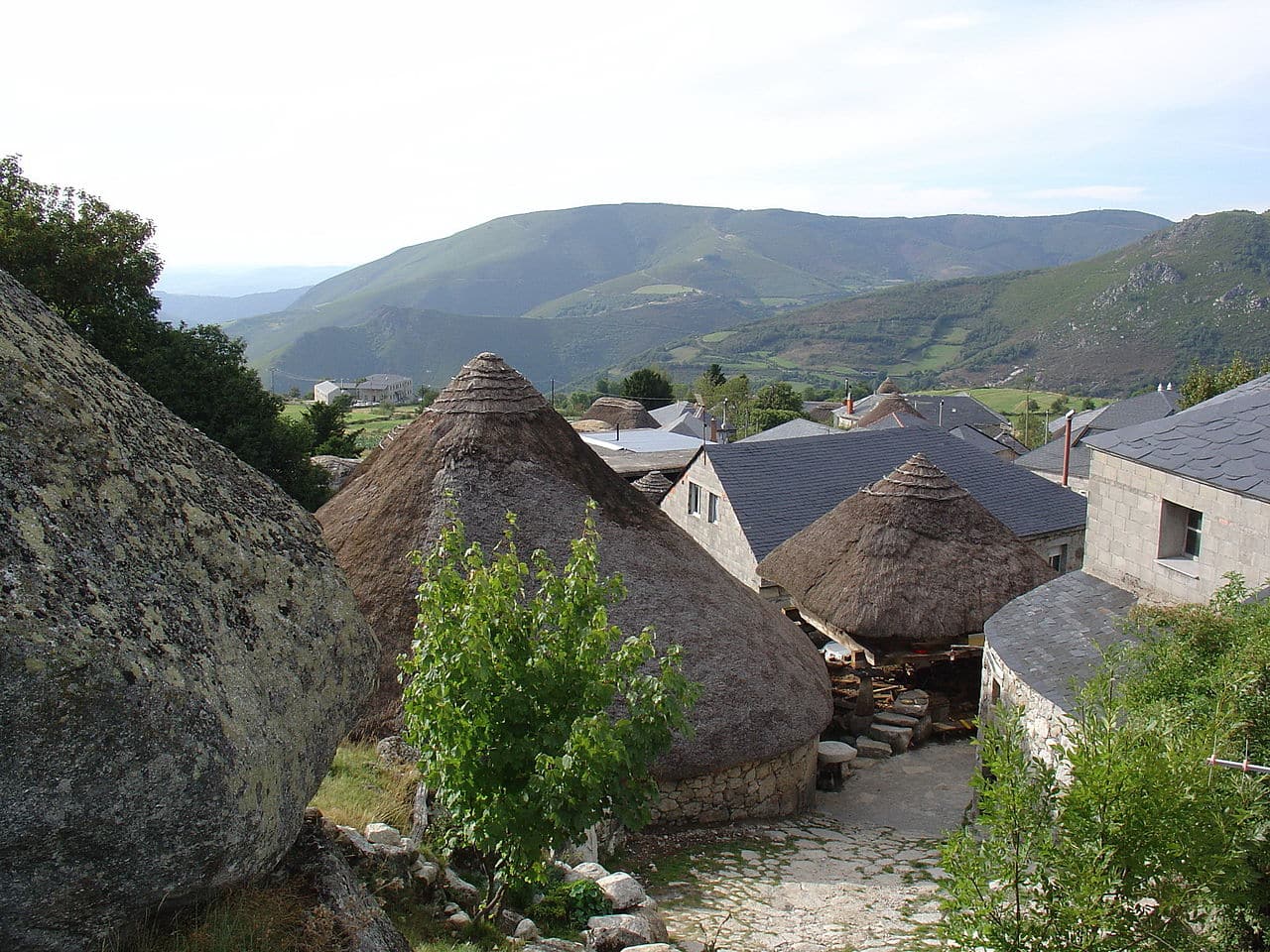
the village of Piornedo It is one of those places that have known how to preserve themselves as if time did not pass through them. Undoubtedly, their isolation in the heart of the city has contributed to this. Lugo province and surrounded by exuberant nature.
More specifically, you will find it at more than a thousand meters of altitude within the Ancares Lucenses Biosphere Reserve, bordering on the Leoneses. It belongs to the parish of San Fiz de Donís, in the municipality of Cervantes. All of this makes it seem a fairy tale village surrounded by exuberant nature and that offers you an incomparable peace. Next, we are going to show you what to see and do in Piornedo so that you get the most out of your visit to this Galician town.
What to see in Piornedo

One of the pallozas of Piornedo with its hórreo
The beauty and typicality of this village meant that, already in 1931, it was declared Historic Artistic Set and later on, A Cultural. To both recognitions, we would add the ethnographic importance, as it has preserved its traditional buildings of pre-Roman origin. Next, we will talk about them, but first we want to explain how to get to Piornedo.
The village is located more than an hour and a half from the city of Lugo. Therefore, the road you must take to get there is the A-6 highway. From the Galician area, the shortest route is to take the exit towards Becerreá and Navia de Suarna and then go through San Román de Cervantes and Degrada to Piornedo. In total, there are about fifty kilometers.
On the other hand, if you come from the province of León By the same A-6, the exit is that of Ponferrada and Vega de Espinareda. Then you must continue to this last town on the LE-711 road and, then, on the LE-712 to Piornedo passing through Lumeras, Candín or Tejedo.
The Pallozas of Piornedo
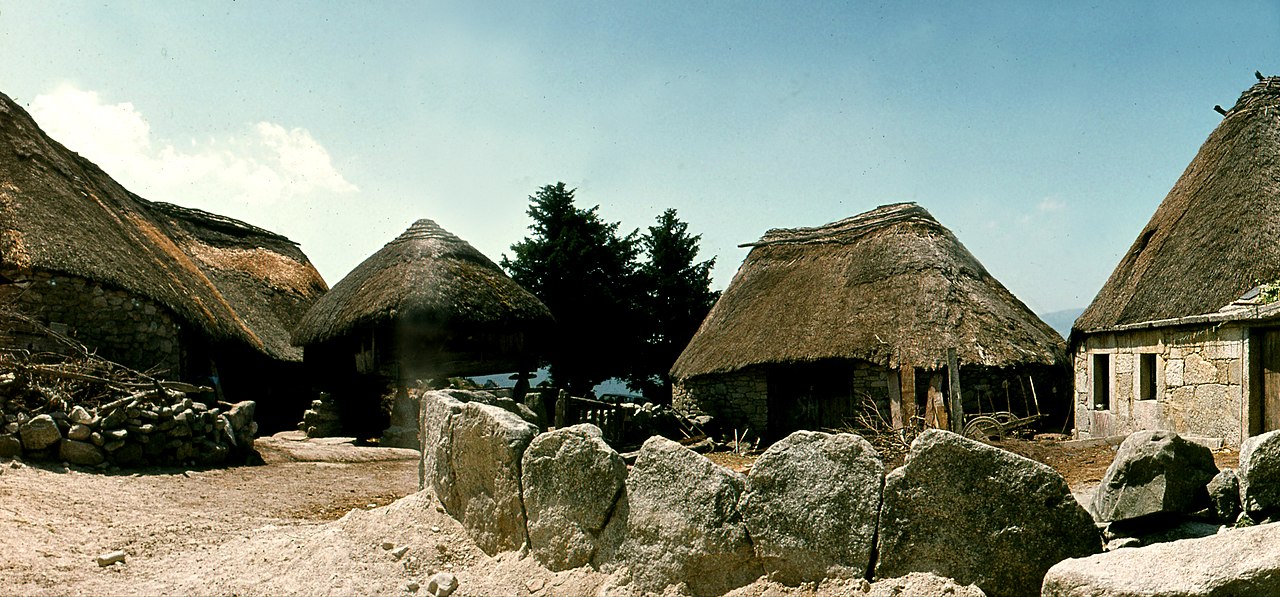
Several pallozas from the Lugo village
Once you have arrived at the Lugo village, the first thing that will catch your attention are the peculiar cabins that make it up. are the calls pallozas, as we told you, buildings of pre-Roman origin that are identified with the castro culture of the celts. Therefore, they are typical of the area and of the west of Asturias, although Britain there were similar buildings during the Iron age.
Its architectural composition is very simple. These are circular or oval constructions between ten and twenty meters in diameter. The walls are low and raised with stones. Finally, the roofs are conical and are made of plant elements such as rye stalks. These roofs or boobs They could be very elaborate. For example, in the nearby village of balouta, show a precise and magnificent braiding of straw.
Until the middle of the last century, they were used as a home, but also to keep livestock at night. This lived with people and provided heat to withstand the low winter temperatures. Because, inside, the humblest only had a room that served them for everything. In it they cooked, slept and made their lives. Unlike these, the largest had several rooms.
In Piornedo there are about fourteen pallozas, which are privately owned. As we told you, they have been declared an Asset of Cultural Interest, although they are now used as stables for cattle. However, one of them has been turned into a museum so you can see what life was like in the village decades ago. is the call Sesto House and it also shows you many of the traditional utensils used by its inhabitants.
The horreos
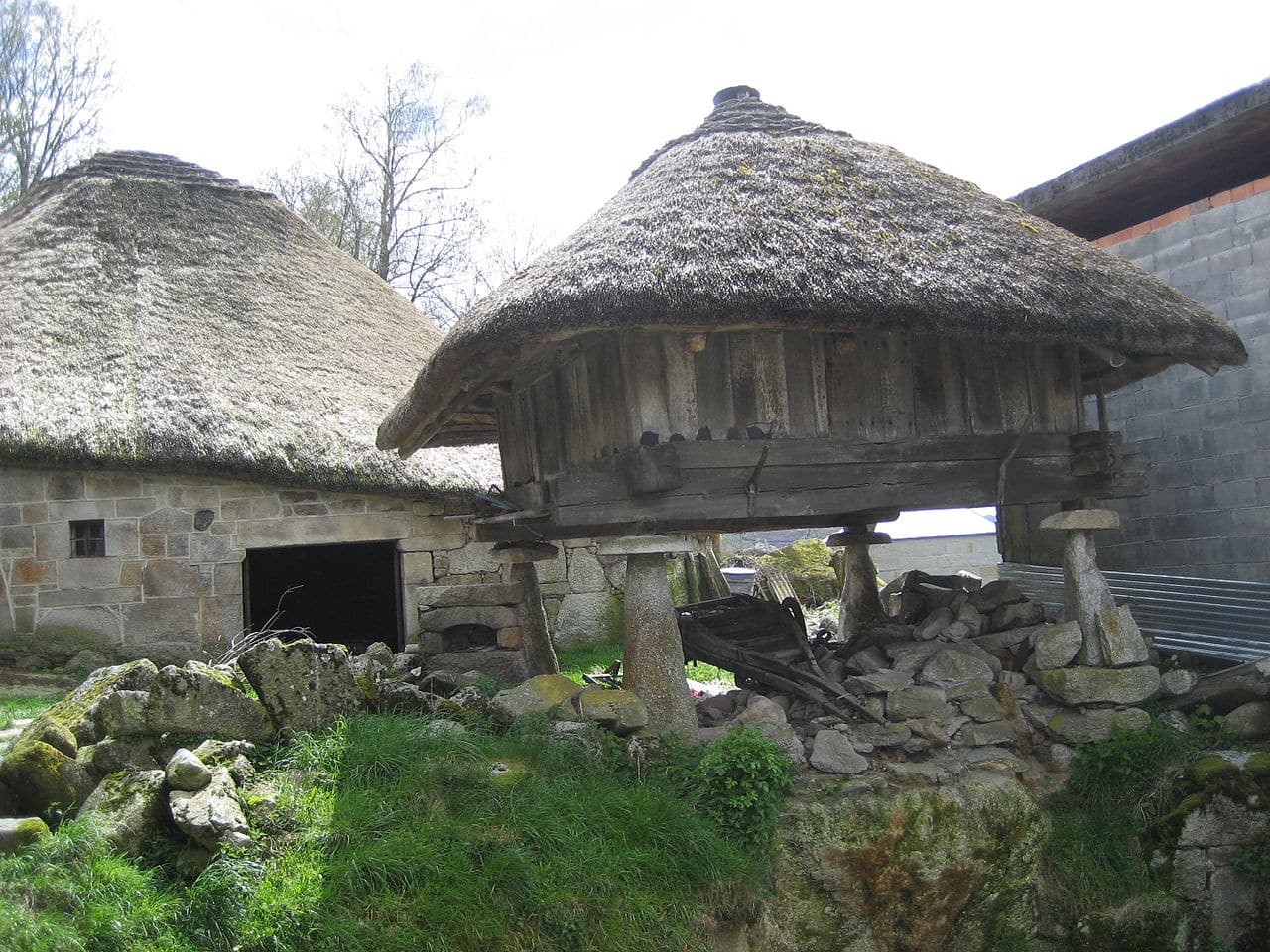
In the foreground, one of the granaries of Piornedo
Together with the pallozas, they are other singular constructions of Piornedo. Because they exist throughout the north of Spain, but in each region and even in each area they have its quirks. As you have seen many times, the Asturian granaries have nothing to do with the Galician ones. The only thing that unites them is their purpose: they were used to store crops, firewood and, in some cases, farm implements.
Even in the border areas you can see how these constructions mix features of both territories. This occurs in those of Piornedo, which they look more like the Asturian granaries than the ones from Lugo. Because, like the first ones, they are made up of a square and closed wooden room that is supported on four stone pillars. Its main difference is on the roof. Because in this case it is also rye straw, as in the pallozas. However, unlike these, in the granaries they are hipped.
On the other hand, those in the Galician style are usually smaller and narrower, with a rectangular floor plan, as well as lower. In addition, stone was also used for its construction, not just wood, which has made it better preserved.
The church of San Lorenzo and other things to see in the Lugo village
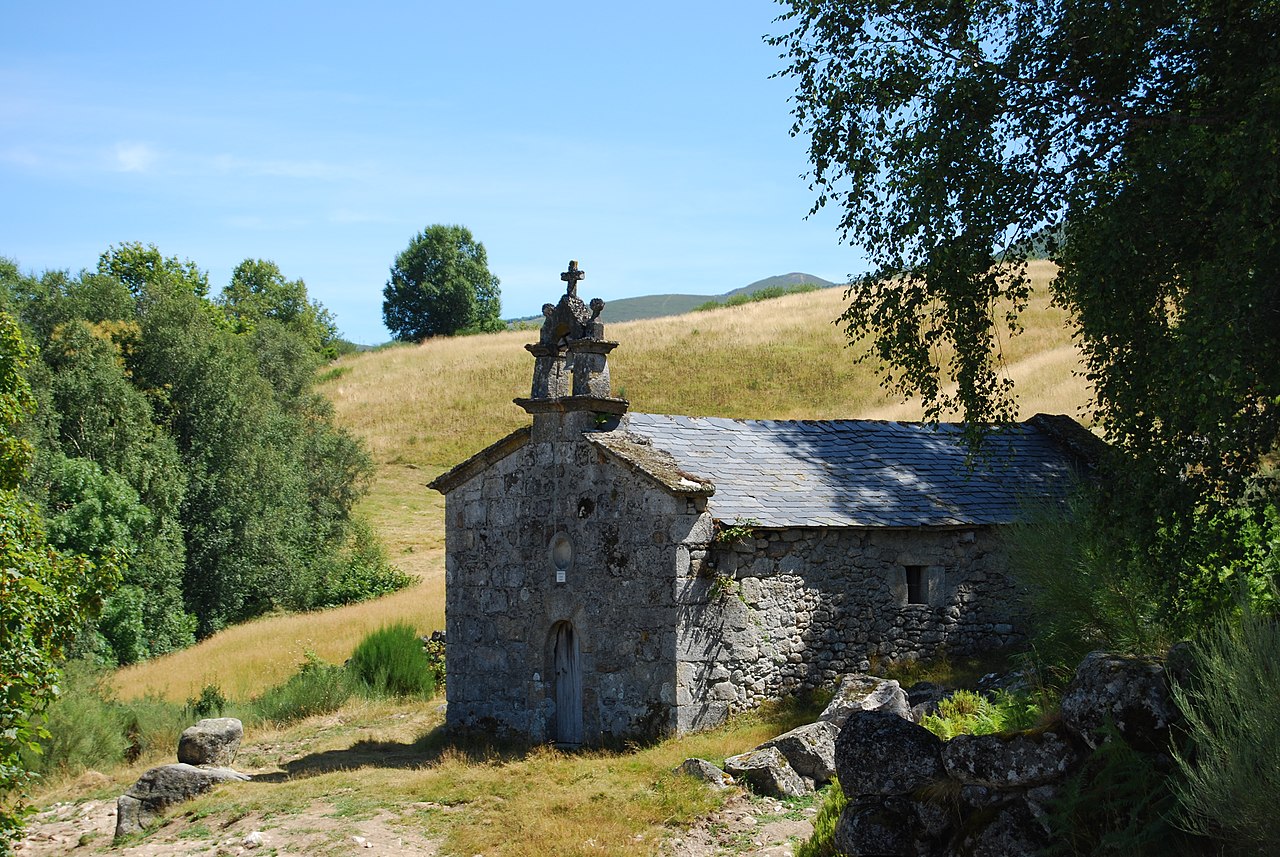
Church of San Lorenzo
After walking through the quiet cobbled streets of Piornedo, visiting its pallozas and contemplating its granaries, we advise you to get to know the church of San Lorenzo. It is the main one in this small village and is located in the highest part. Actually, it is a very simple hermitage. It has a rectangular floor plan and is built with granite masonry.
On the contrary, its roof is made of slate and its main façade presents a semicircular arch on which there is a circular oculus. Finally, the temple is crowned with a small belfry with the bell tower. Also, at the exit of the village you have another small hermitage dedicated to San Bartolomé.
However, you will find it more curious to come across a fountain where you can read the inscription «It was made in 1787. Long live Piornedo». Apparently, it was built with the contribution of the inhabitants of the village and consists of a small base on which there is a cross guarded by two human figures.
The natural environment of Piornedo
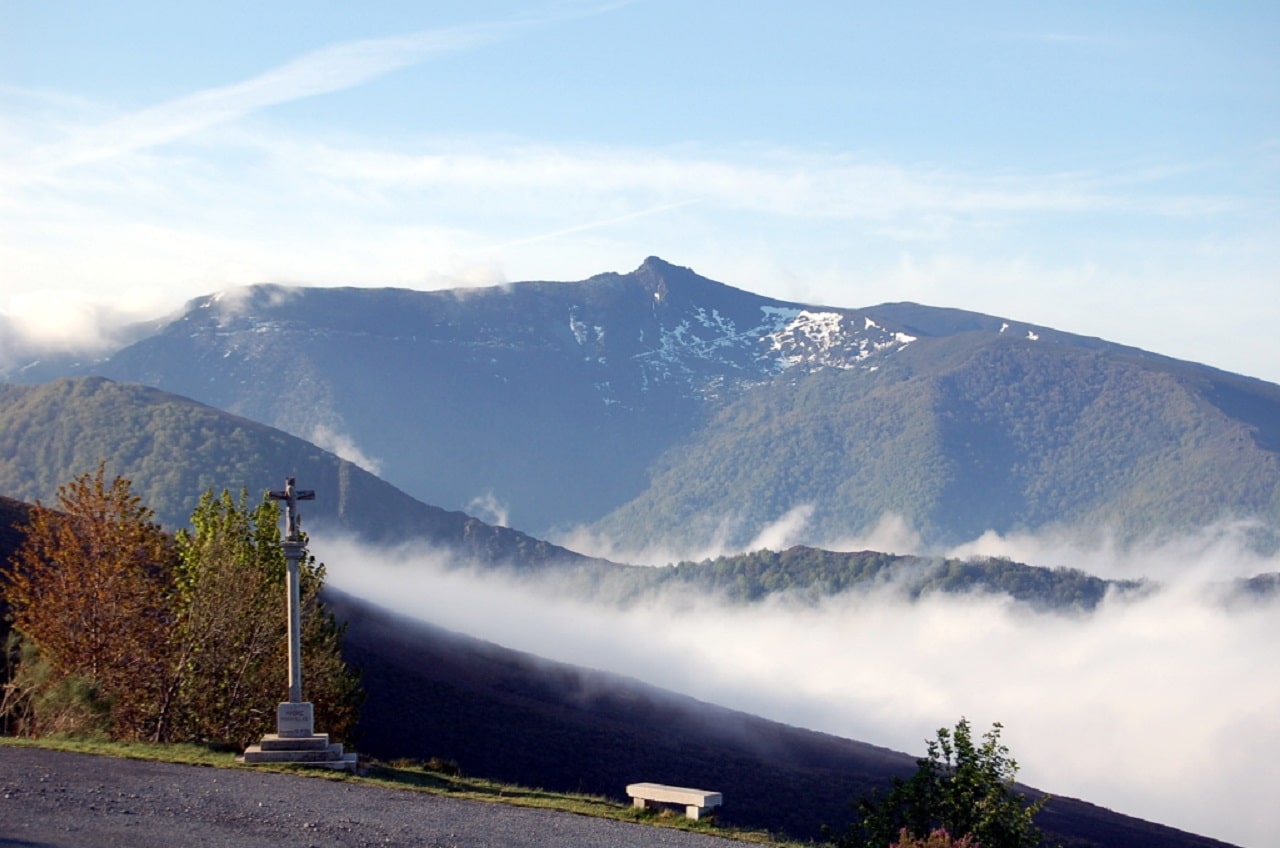
Sierra de los Ancares seen from Piornedo
Along with the peculiarities of its architectural ensemble, the other great quality of this Lugo village is its wonderful natural setting. As we told you, it is in full region of the Ancares, extensive territory divided by the homonymous sierra that occupies areas of the provinces of León and Lugo. Some even extend it to Ibias, southwest of Asturias.
As you know, this vast space offers you numerous natural wonders and extraordinary landscapes. Specifically, from Piornedo there are several hiking trails that will allow you to enjoy all of them. Perhaps the most famous is the one that takes you to the mustallar peak, which, with its 1935 meters of altitude, is the highest in the entire province of Lugo.
It leaves from the chapel of San Lorenzo, which we have already mentioned, and goes through places with large granite rocks and shepherds' huts. From the top, also, you will be able to see wide territories both Galicia and León. The route has, in total, eleven kilometers and a medium-high difficulty. The estimated time to do it is about five hours.
Much shorter is the one that goes from Piornedo to Donís, because it only has a kilometer and a half. However, its difficulty is high, so you should not trust yourself. Instead, the Tres Bispos route It is longer, since it is twenty-four kilometers long. In your case, part of degrades, in the same municipality of Cervantes. If you do it, you will pass through places like Campa da Braña, impressive holly, pine and oak forests, as well as waterfalls. Furthermore, if you want to continue it, you can reach the elevations of Peñarrubia and Mustallar, already mentioned.
In short, these are some of the best hiking trails you can do in Los Ancares in the Piornedo area. All of them will show you a privileged natural environment. But we cannot end this article without telling you about one of the nearby towns to the one that concerns us, because they are also very beautiful.
Towns near Piornedo
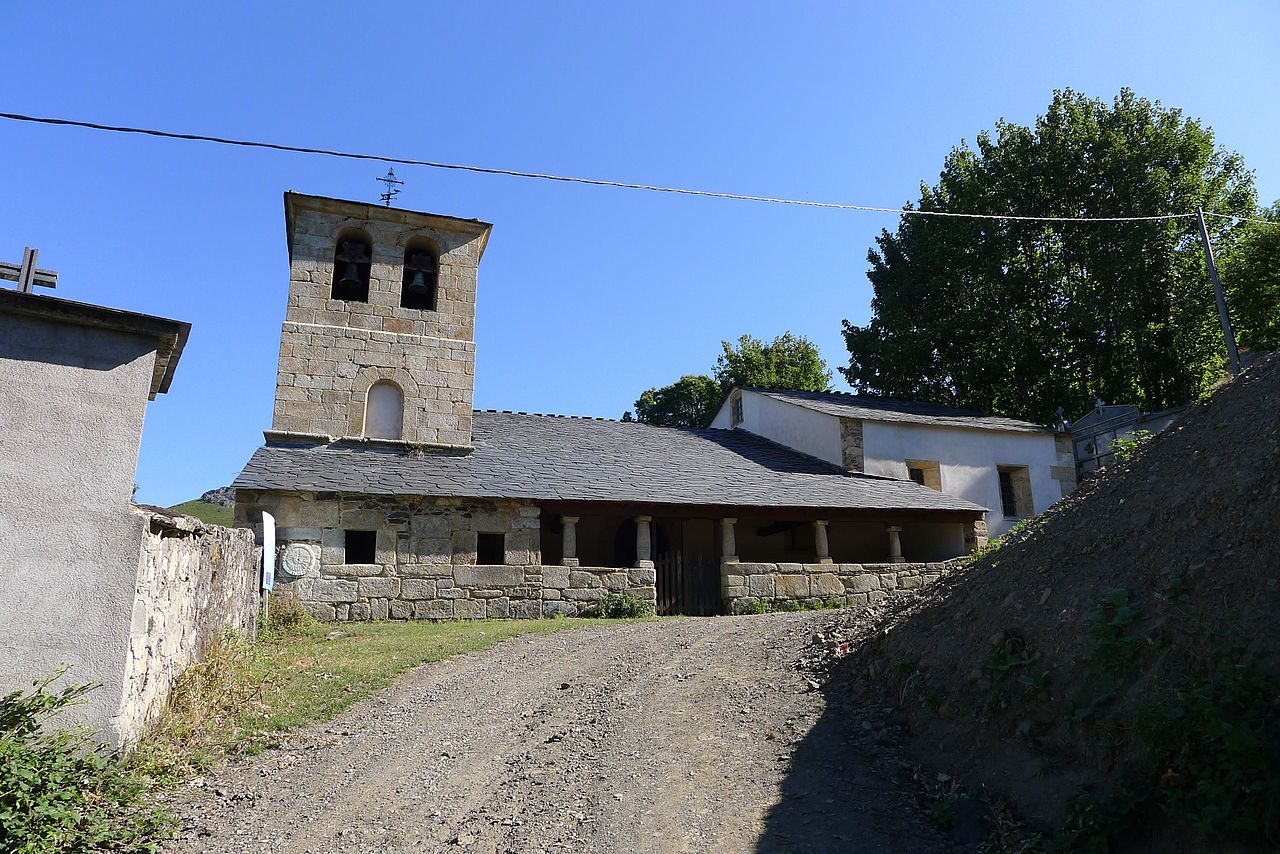
Church of San Félix in Donís
As we have already told you, this Lugo village belongs to the parish of donis, which barely has one hundred and fifty inhabitants. However, in this last location, you can see the San Felix church, a beautiful rural temple built in stone and roofed with slate. Its wide bell tower and its portico stand out.
We also want to advise you to approach Villarello, especially since it has the imposing doiras castle, declared an Asset of Cultural Interest. It is located on a hill, on the banks of the Cancelada River and surrounded by thick vegetation. There are not many data on this impregnable fortress, but it dates back to the XNUMXth century.
More curious are some of the legends that refer to the castle. One of the most curious is the one that says that the family of Miguel de Cervantes, the author of Quijote, had a relationship with him. They are based on the fact that the village of San Miguel is very close, that Vilarello belongs to the municipality of Cervantes and that the village also has a stately manor house named the Saavedra house. Finally, in the capital of the municipality you have the beautiful parish church of Santa Maria del Castro, so called because it is next to an ancient Celtic town. It was also built on a late medieval necropolis and next to some gold mines.
In conclusion, we have shown you everything you need to know about Piornedo. As you have seen, it is a village of Galicia full of singularities and located in an extraordinary natural environment, that of the Lugo Ancares. Dare to meet her.